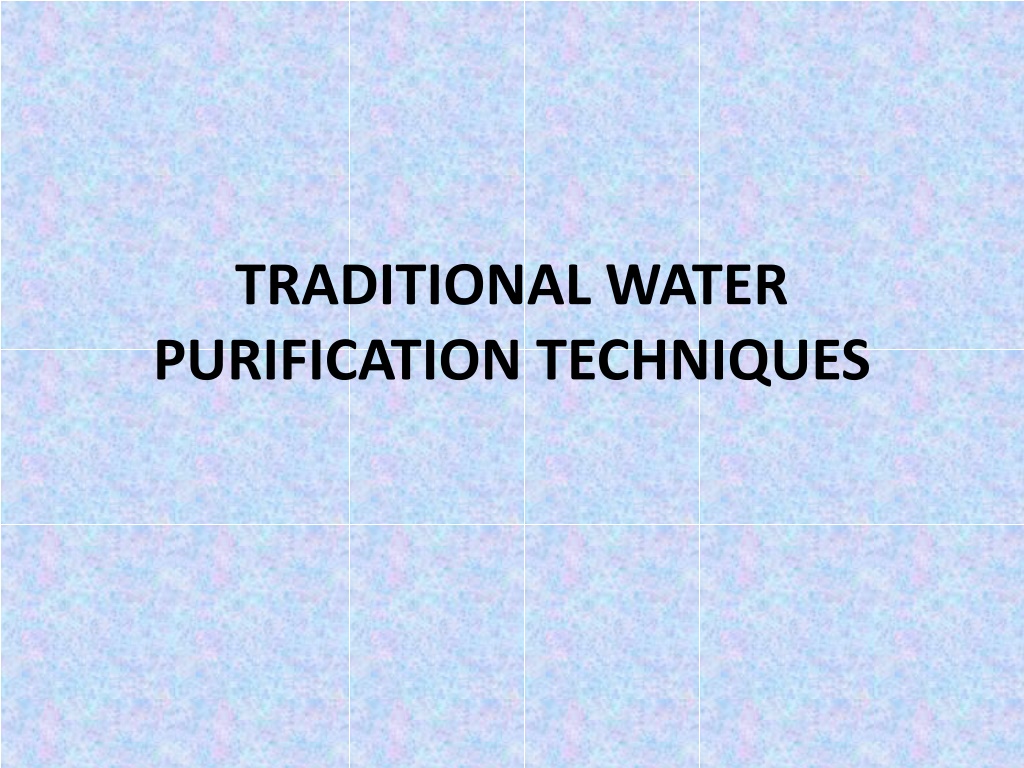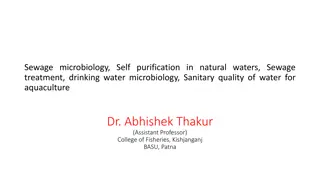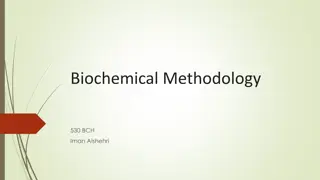Traditional Water Purification Techniques from Around the World
Traditional water treatment methods in various rural communities involve simple techniques such as filtration through winnowing sieves, cloth, clay vessels, and plant materials to remove visible impurities. These methods are used in places like Mali, India, Niger, and Egypt to filter out particles and address water pollution issues effectively.
Download Presentation

Please find below an Image/Link to download the presentation.
The content on the website is provided AS IS for your information and personal use only. It may not be sold, licensed, or shared on other websites without obtaining consent from the author. Download presentation by click this link. If you encounter any issues during the download, it is possible that the publisher has removed the file from their server.
E N D
Presentation Transcript
TRADITIONAL WATER PURIFICATION TECHNIQUES
Traditional water treatment methods All over the world rural communities adopted simple & rudimentary techniques mainly aims at filtering out the visible impurities These methods can remove certain types of particles in water
Some of the traditional treatment methods are.. Filtration through winnowing sieve Filtration through cloth Filtration through clay vessels Clarification & filtration through plant material Jempeng stone filter method
1. Filtration through winnowing sieve Used widely in Mali (Bamaka area) Used when the water source is polluted by wind borne impurities such as dry leaves, stalks, & coarse particles The raw water is passed through a winnowing sieve & the impurities are filtered Sieve cannot filter fine suspended particles in water, hence cannot be used when raw water is turbid or muddy
2. Filtration through cloth Commonly used in villages in India, Mali, the southern part of Niger & other parts of developing world Thin white cotton cloth or a discarded garment is used as the filter medium Can filter impurities like plant debris, insects, dust particles or coarse mud particles Filtration of suspended particles- limited extended Not suitable for turbid water In some Indian villages, wood ash of Sal tree is mixed with water
3. Filtration through clay vessels Used in Egypt Clay vessels with a suitable pore size are used Turbid water is collected in a big clay jar & allowed to settle down Then water in the jar will trickle down through the porous clay wall of the jar This trickled water is collected in a vessel by placing it at the bottom of the porous clay jar
4. Clarification & filtration through plant material Commonly used in Tamil Nadu & Kerala, India Highly turbid water fine suspended & colloidal particles are first coalesced & settled out using nuts of a locally available plant, which is then filtered using cloth filters Roots of the rhizomes from ramacham are placed in a clay jar, which has tiny holes in its bottom Raw water is poured into this jar, & then the water is allowed to filter through this layer of roots Usually this filtered is vey clear & has a pleasant smell
5. Jempeng stone filter method Developed in Saringan batu Jempeng Bali, Indonesia A small artificial pond or a by-pass channel is cut by the side to an irrigation canal, which carries muddy water Jempeng stone filter units are placed in the artificial ponds The filter unit is carved out of a porous material called cadas Average height of 60 cm & diameter of 50 cm & a wall with a thickness of 10-12 cm Muddy water filters through the porous wall & gets collected inside























